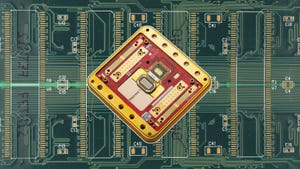Microsoft Goes All-In On Container Data CentersMicrosoft Goes All-In On Container Data Centers
Microsoft said today that its future data centers will consist entirely of data center containers, abandoning the raised-floor architecture that has been a staple of modern data center design.
December 2, 2008
Microsoft said today that its future data centers will consist entirely of data center containers, abandoning the raised-floor architecture that has been a staple of modern data center design. With its Generation 4 Modular Data Center, Microsoft will also take a modular approach to power and cooling infrastructure, according to Mike Manos, who describes the new approach on his blog.
The new data centers will be designed to be extraordinarily energy efficient, and operate without water, relying entirely upon air-side economizers for cooling, Manos said. The new data centers will not even have a roof. While allowing that "some might be uncomfortable with this," Manos said Microsoft's research found none was needed, perhaps a reference to its experiments with data centers in tents.
By designing its data centers entirely with modular components, Microsoft can drive down the cost of its data centers with bulk ordering and repeatable design. Microsoft has published a video depicting how the Generation 4 data centers would be built and deployed.
"We believe it is one of the most revolutionary changes to happen to data centers in the last 30 years," Manos writes. "In short, we are striving to bring Henry Ford’s Model T factory to the data center. Gen 4 will move data centers from a custom design and build model to a commoditized manufacturing approach. We intend to have our components built in factories and then assemble them in one location (the data center site) very quickly."
Microsoft announced earlier this year that it would dedicate half of its new Chicago data center to 40-foot data center containers pre-packed with up to 2,000 servers. With its new design, Microsoft will apply that concept to the entire facility, and adopt a similar approach with mechanical equipment.
Most major server vendors are now offering data center containers, motivated at least in part by the enormous number of servers that can be packed into Microsoft's container farms. Microsoft executives have said they expect the Chicago container facility to house between 400,00 and 500,000 servers.
Manos said he expects the new design to yield exceptionally low Power Usage Effectiveness (PUE) ratings, which have been a key metric for energy efficiency.
"A key driver is our goal to achieve an average PUE at or below 1.125 by 2012 across our data centers," Manos writes.Microsoft previously said that its containers could achieve PUE ratings as low as 1.22, while Google has disclosed an average PUE of 1.21 for its company-built data centers.
Microsoft said the new design would seek to dramatically reduce the use of concrete and copper, as well as water. "We believe these will be the next areas of industry attention when and if the energy problem is solved. So we are asking today…'how can we build a data center with less building'?"
Microsoft acknowledged that the design will be controversial. "By sharing this with the industry, we believe everyone can benefit from our methodology," said Manos. " While this concept and approach may be intimidating (or downright frightening) to some in the industry, disclosure ultimately is better for all of us. Gen 4 design (even more than just containers), could reduce the ‘religious’ debates in our industry."
About the Author
You May Also Like







